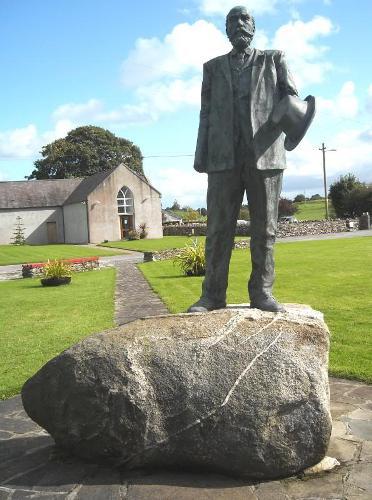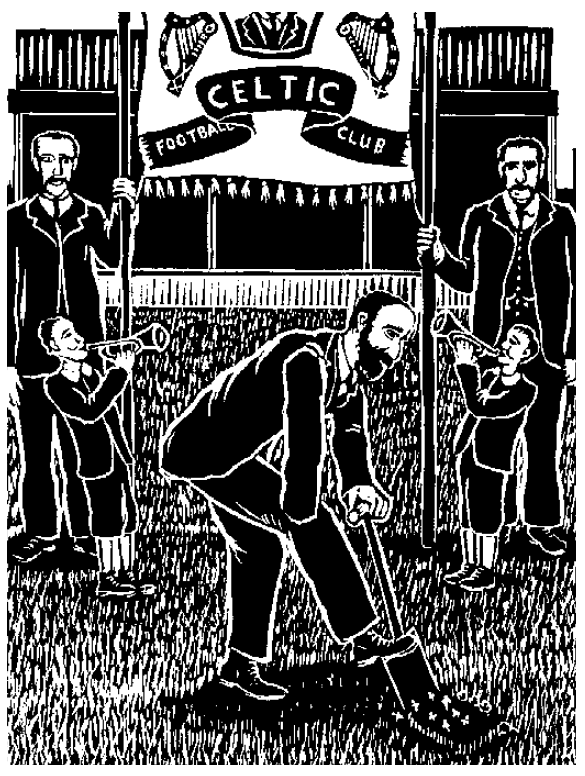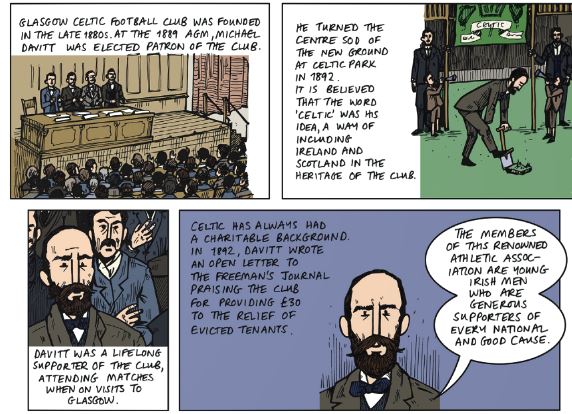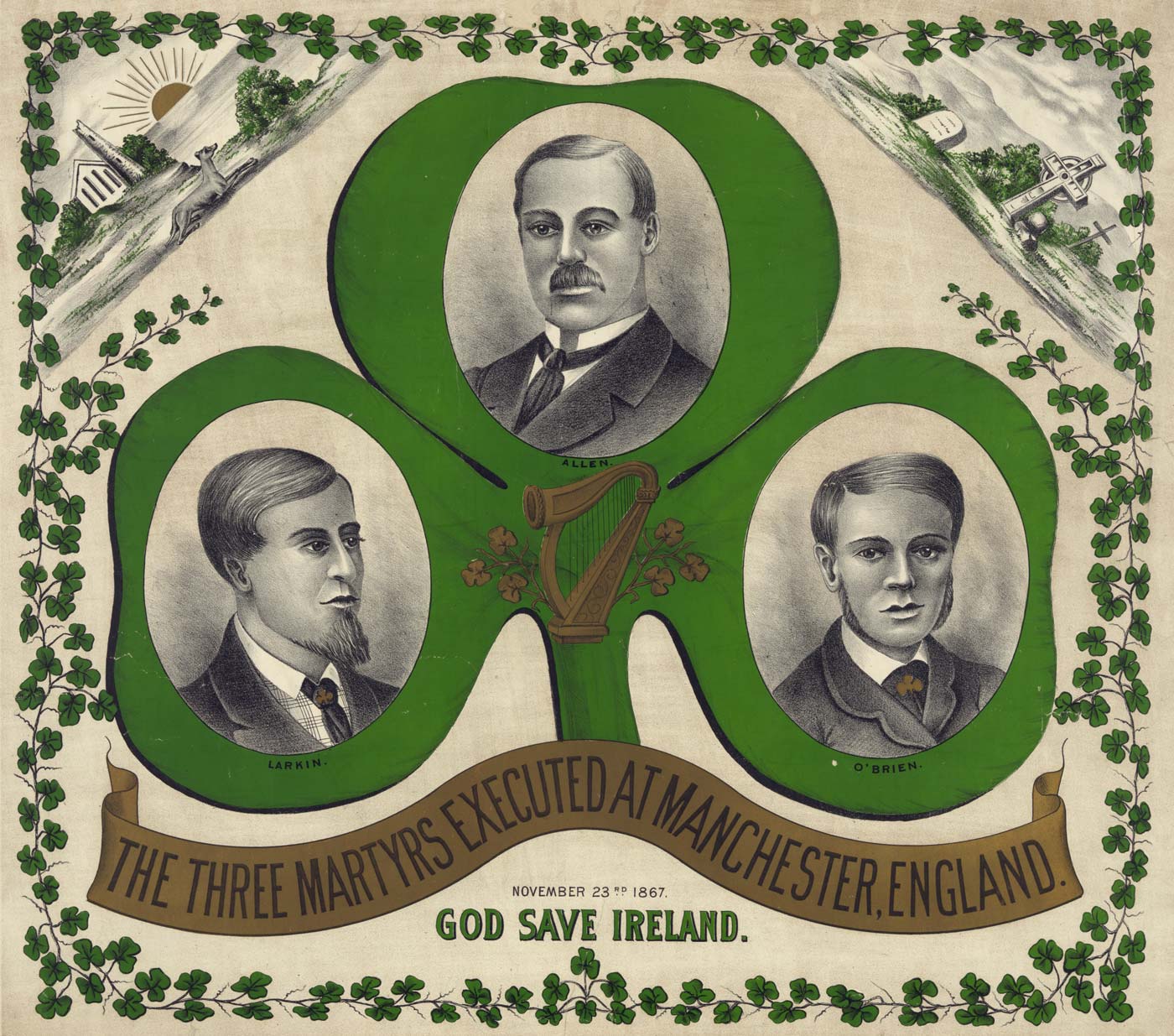The year of 1892 saw some of the earliest controversial events in Celtic Football Club’s history. For four years previous, Celtic Park had been situated just 500 metres from its current site – at the north-eastern juncture between Springfield Road and London Road. That initial stadium had been constructed in less than six months by Pat Gaffney and a large volunteer workforce. However, the land on which the impressive original Celtic Park stood was that of private property, owned by Alexander Waddell.
The right to continue utilising the 110 yard x 66 yard pitch, complete with a pavilion, a referee’s room, an office, changing facilities and capacity for 1,000 spectators, was costing Celtic Football Club £50 per annum. Despite the club’s charitable endeavour, Alexander Waddell began to take note of the rising Celtic fortune and, rather iniquitously, raised his rental demands by some 800% from £50 to £450 per annum. Such demands were not feasible for a growing club like Celtic and thus the club explored alternative options.

The Celtic committee viewed sites in Springburn and Possilpark before taking advantage of a disused brickyard, adjacent to Janefield Street Cemetery. Productive talks were held with the brickyard landowner, an unlikely saviour, named James Hozier or Lord Newlands as he later became titled. Hozier had been an active Unionist politician, who had worked as Foreign Secretary and Private Secretary for the Prime Minister. He was an enthusiastic establishment figure, who was President of the Lanarkshire Territorial Forces Association and even went on to become the Grand Master Mason of Scotland in 1899 until 1903.
A deal for a ten-year lease had initially been struck, but James Hozier was later persuaded to sell the land to Celtic permanently. A lasting reminder of Hozier’s involvement in the transaction can be found in the shadow of Celtic Park, off London Road, where Mauldslie Street (named after his former home, Mauldslie Castle) exists.
Once the club confirmed their decision to relocate, a large band of volunteers were once more required to construct the new stadium. 100,000 cartloads of earth were used to plug a 40-foot quarry half filled with water. Two tracks were installed, the outer to be used for cycling events and the inner to be used for running. Both were among the best of their kind in the world. A 15-tiered stand spanned the touchline, and a two-storey pavilion was added.
The new Celtic Park was officially opened on Saturday 13 August 1892 with the club’s third, of what would prove to be annual, sports days. Newspaper reports of the time describe the weather that day to be of ‘the most disagreeable kind.’ Indeed, a thunderstorm hovered above the new ground at 3pm. However, the wet conditions were not enough to stop star attraction, Bradley (of Huddersfield), winning the 150 and 100 metre sprint races. Edinburgh distance runners, Hume and Hunter, claimed the top two spots in the mile race; whilst the day saw further distance runs and cycling jousts won by Englishmen.
A quote from the 1932/33 Celtic handbook reflected on the day: ‘The old trouble landlord brought about a change of field, and it was in keeping with it, too, that a seeming impossible site was converted into a splendid enclosure. A case of leaving the graveyard to enter the paradise. A happy title did that pressman strike. The lessons learnt and the experience gained on the old monument to the loyalty and fidelity of the pioneers of the club – did they not give their labour to construct it- were not lost. The splendid pedestrian and cycling tracks, which surround the playing area on which champions the world over showed their paces, added another title: ‘The home of sport.’ It was an auspicious occasion and great day when the late Fenian, Michael Davitt, laid a fresh centre sod of turf from Donegal with a handsome silver spade presented to him by the club.’
As seen in the extract from the handbook, Celtic invited Michael Davitt to perform the penultimate action of the day, when he laid the first sod of shamrock smothered turf, imported from the town of Mullachdubh in Donegal. Michael Davitt was the founder of the Irish National Land League and had served several years in a Dartmoor prison for ‘Fenian agitation’. He was appointed Celtic Patron at the club’s AGM in 1889 and was a natural choice to perform such a symbolic act in terms of extenuating the Irish identity of the club.

Davitt was accompanied at the new Celtic Park by MP Timothy Daniel Sullivan, who concluded the occasion when he turned to the crowd and sang the unofficial Irish national anthem of the time: God Save Ireland. MP Sullivan had penned the song himself, in tribute to the three Manchester Martyrs, who were executed after a sham trial on 23 November 1867.
The grand opening was epitomised by a poetic east end headmaster in the following way:
On alien soil like yourself I am here;
I’ll take root and flourish, of that never fear;
And though I’ll be crossed sore and oft by the foes,
You’ll find me as hardy as Thistle or Rose.
If metal is needed on your own pitch you’ll have it
Let your play honour me and my friend Michael Davitt.
Meanwhile, Davitt himself is reported to have proclaimed: “The green sod brought from dear old Donegal will prove so slippery that any Saxon rival who runs over it will fall a cropper.”

Sadly, the turf was stolen hours after it was ceremoniously laid and the culprit was never found.
In response to the theft, another poem was written, which began:
The curse of Cromwell blast the hand that stole the sod that Michael cut
May all his praties turn to sand
The crawling, thieving scut!




